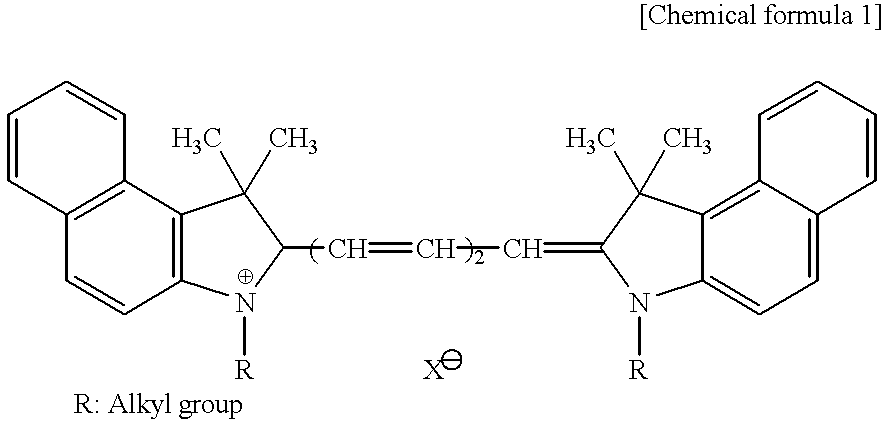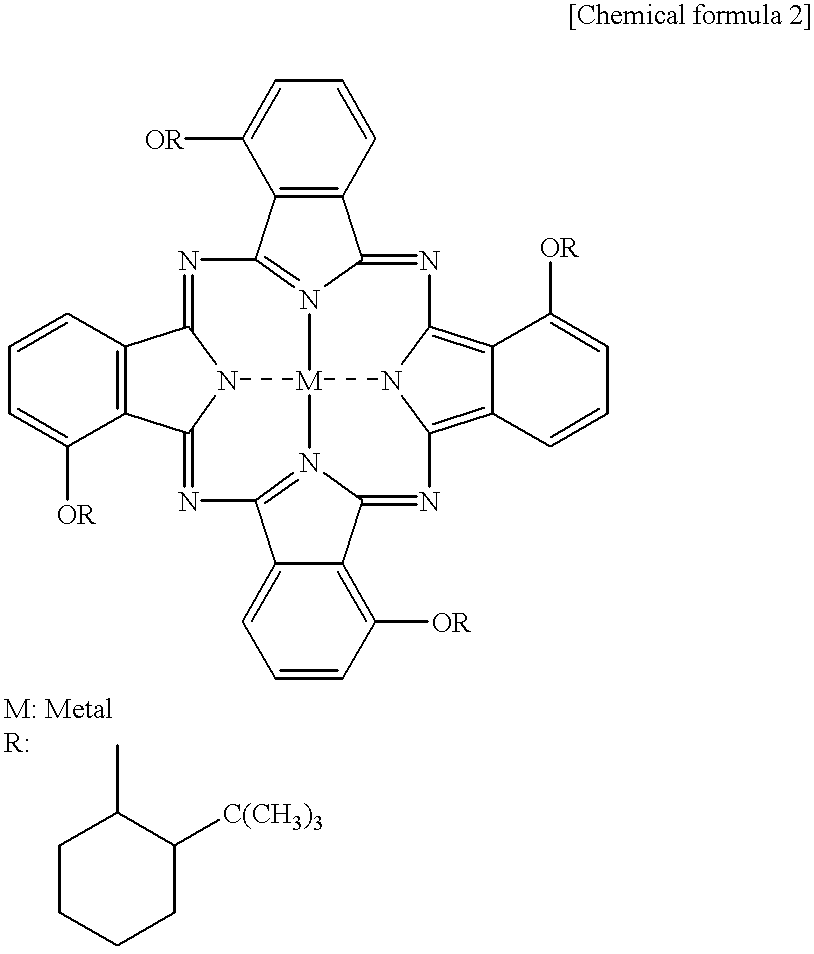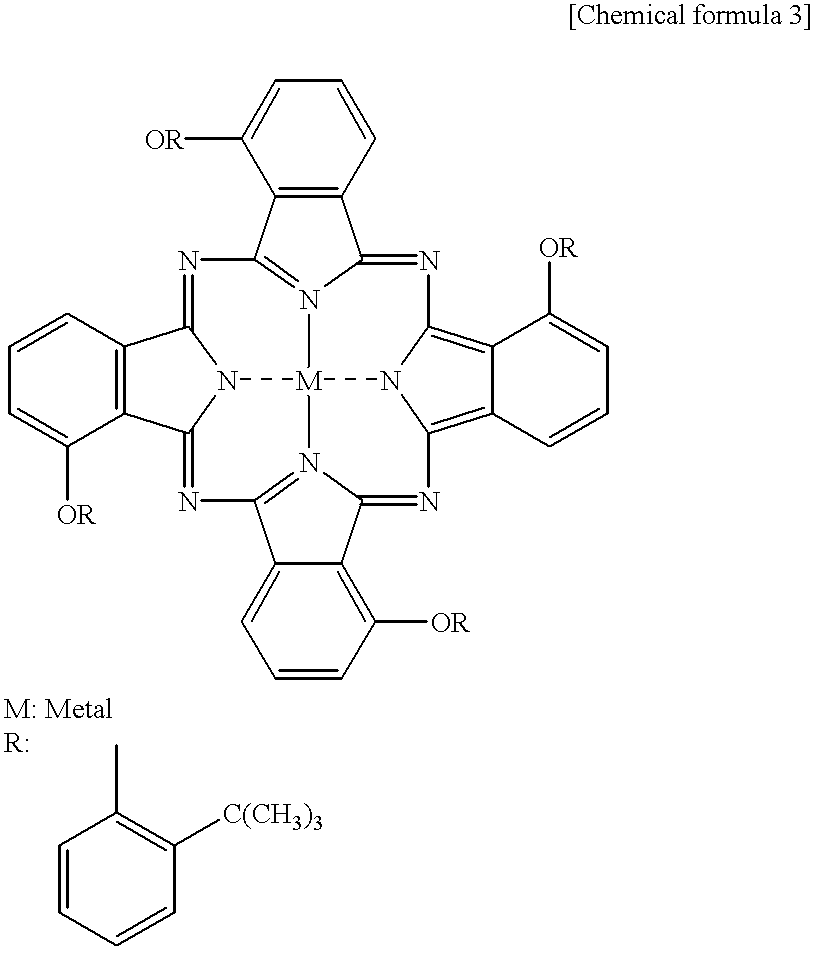Optical recording medium
a technology of optical recording and recording medium, applied in the field of optical recording medium, can solve the problems of difficult multi-level recording, difficult to perform multi-level recording in many levels, and difficult to change the reflection level during regeneration in five levels or mor
- Summary
- Abstract
- Description
- Claims
- Application Information
AI Technical Summary
Benefits of technology
Problems solved by technology
Method used
Image
Examples
example 2
[0088] An optical recording medium was produced in the same manner as example 1 and multilevel recording performed although the film thickness of the Ag reflecting film was changed to 100 nm. The recording conditions were identical to example 1. Jitter values of the recorded signals were measured in the same manner.
example 3
[0089] An optical recording medium was produced in the same manner as example 1 and multilevel recording performed although the reflecting film material was changed to Au (coefficient of thermal conductivity of gold is 318 k / W.multidot.m.sup.-1.multidot.K.sup.-1; chronological table of science) The recording conditions were identical to example 1. Jitter values of the recorded signals were measured in the same manner.
example 4
[0090] An optical recording medium was produced in the same manner as example 3 and multilevel recording performed although the film thickness of the reflecting film was changed to 100 nm. The recording conditions were identical to example 1. Jitter values of the recorded signals were measured in the same manner.
PUM
| Property | Measurement | Unit |
|---|---|---|
| Tg | aaaaa | aaaaa |
| Tg | aaaaa | aaaaa |
| thickness | aaaaa | aaaaa |
Abstract
Description
Claims
Application Information
 Login to View More
Login to View More - R&D
- Intellectual Property
- Life Sciences
- Materials
- Tech Scout
- Unparalleled Data Quality
- Higher Quality Content
- 60% Fewer Hallucinations
Browse by: Latest US Patents, China's latest patents, Technical Efficacy Thesaurus, Application Domain, Technology Topic, Popular Technical Reports.
© 2025 PatSnap. All rights reserved.Legal|Privacy policy|Modern Slavery Act Transparency Statement|Sitemap|About US| Contact US: help@patsnap.com



